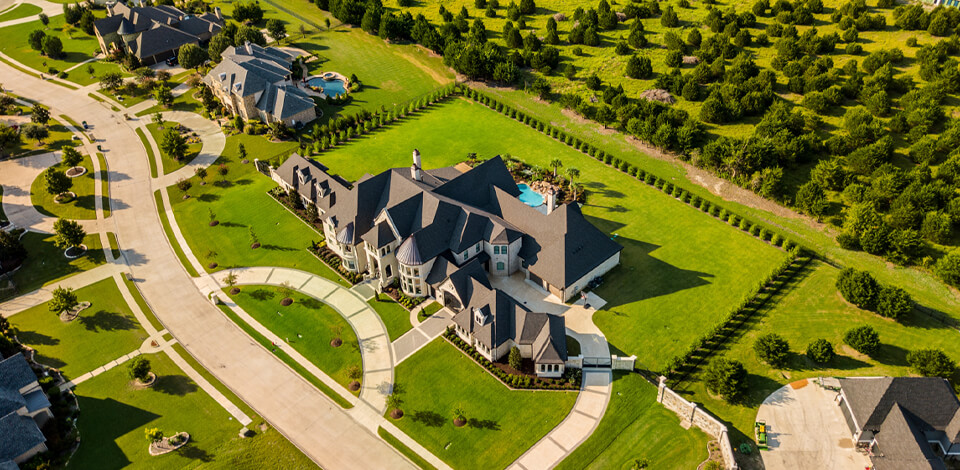
Real estate aerial photography is a step ahead of standard property shooting as it involves using drones that can capture a building in a more spectacular manner. In addition to basic angles, using a drone, you can show potential buyers/tenants how a real estate looks from above, highlight its proportions and size, so no wonder this direction develops so fast.
Finding your place in a highly competitive sphere of high end real estate photography can be an arduous task. That’s why you need to have a solid theoretical and practical base to offer drone photography services to homeowners, real estate agents, and other clients. I have prepared a rundown of 15 effective aerial real estate photography tips, learning which you can surpass your clients and take amazing images.

If you want to grow your real estate photography business with the help of real estate aerial photography, you have to learn how to fly a drone. There are specialized centers where you can undergo training and then choose one of 700 testing centers in the US to take an exam. You will definitely be asked to pass the exam called FAA Part 107 Airman Knowledge.
Usually, this is a test with 60 multiple choice questions and if you get the passing score, you’ll receive a Remote Pilot Certificate. Such training is obligatory because you must know the rules, restrictions, and standards of piloting a drone. If you are interested in commercial real estate photography, it is forbidden to get down to work without a pilot certificate from the FAA.

Choosing a drone isn’t that simple, because you need to pay attention to different aspects. First of all, make sure an aerial photography drone you are going to buy has a high-res camera for real estate photography. Anything lower than 12MP will only cause frustration. DJI Mavic 2 is currently the most powerful drone for real estate photography.
Those interested in recording footage, have to invest in 4K drones with a frame rate of 30fps or higher. It is also a nice idea to invest in a device with a built-in drone gimbal, as you can expect a smooth flight and stability.
Be attentive to the flight range. This refers to the distance your drone can fly to without losing connection with a control device. I recommend buying a drone capable of covering a mile as the minimum. As for the flight time, an average model can stay active for half an hour. Pro-level drones operate longer. However, every extra minute comes at its price.

If you’re from states of the USA, the first thing you need to do after buying the equipment is to visit the Federal Aviation Administration’s website to find out about the drones for real estate legal regulations in your area.
Next step, if you plan on using your drone commercially, is registering it there. You need to do this, regardless of its size. All registered drone operators get one official identification number that must be undisputedly written on every registered drone.

Equipment for drone real estate photography is rather expensive, so it makes sense to get insurance, which will cover possible expenses if something goes wrong. You can choose hull insurance (protecting owners in case of device loss/damage) or liability insurance (protection against claims made by third parties) based on your needs.
Drone insurance is like a guarantee you can maintain your business if you face unexpected financial obligations. If you work in an area with luxury houses, getting good insurance is a must.
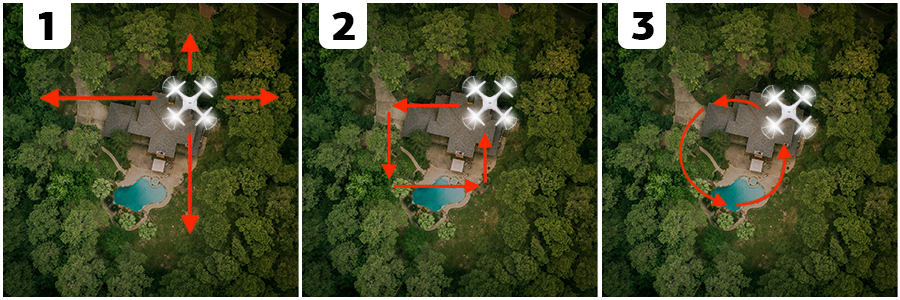
Before attaching your camera to the drone, find an open space to practice flying and master drone filming. Here are some of the exercises you need to practice: Taking off, Hovering, safe and slow Landing, Side to side movement, Draw square and complicated circles in the air, and Rotation.
Taking great aerial home photos is only half the success, as much depends on how you edit them. There are many pitfalls you need to remember about, but, fortunately, you can delegate the tasks to our professional image enhancement service.
We have improved thousands of property images and can bring your photos to the notch. We fix lighting defects, correct colors, and make all needed changes to present a house in an eye-pleasing yet realistic way. If you have specific demands or want us to follow your photo enhancement style, just mention this while placing an order.
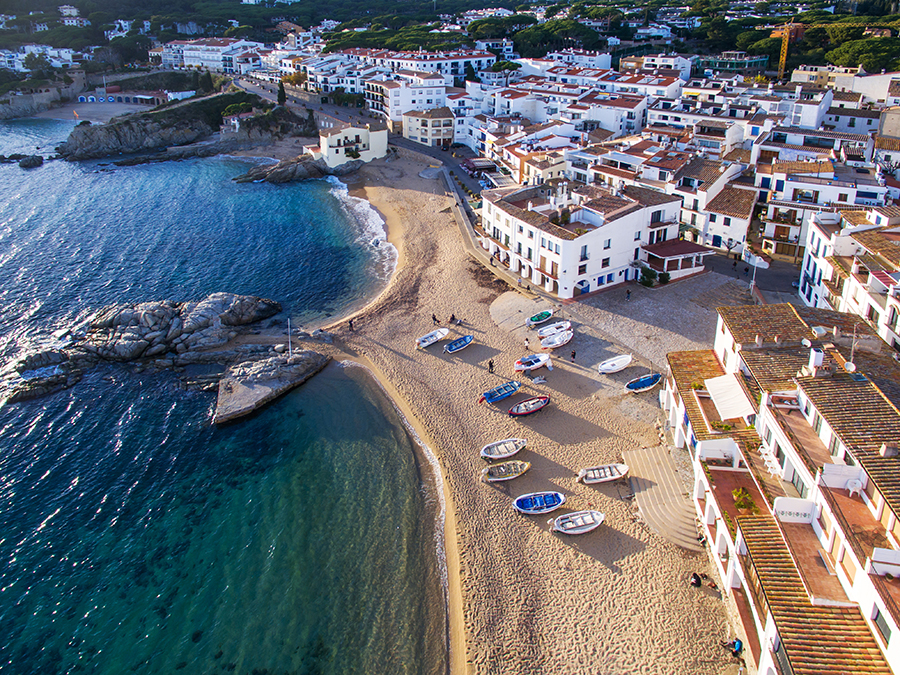
Not only the process of shooting, but also the preparation stage defines how successful your work will be. There are 2 key factors you need to consider – time and weather. To get high-quality aerial real estate photos that don’t require much processing, you should organize a photo session in nice weather.
Besides, calm clear days are more suitable for flying drones. Keep tabs on the weather forecast to be on the safe side. As for timing, it is better to take images of a property when the surrounding is as uncrowded as possible.
If a building is located on a busy street, choose a weekend morning for your work. If there is a beachfront nearby, check when it is less populous and try to take images at that period of the day.Not only the process of shooting, but also the preparation stage defines how successful your work will be. There are 2 key factors you need to consider – time and weather. To get high-quality aerial real estate photos that don’t require much processing, you should organize a photo session in nice weather.
Besides, calm clear days are more suitable for flying drones. Keep tabs on the weather forecast to be on the safe side. As for timing, it is better to take images of a property when the surrounding is as uncrowded as possible.
If a building is located on a busy street, choose a weekend morning for your work. If there is a beachfront nearby, check when it is less populous and try to take images at that period of the day.
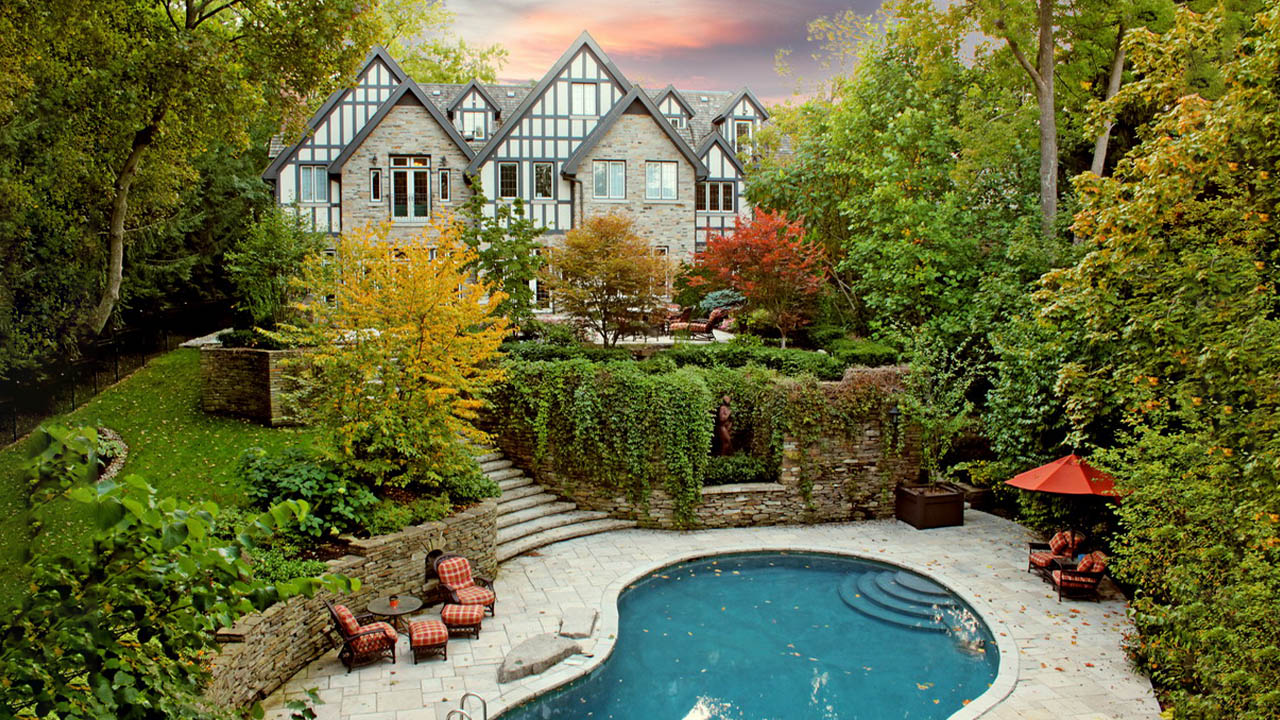
There are no universal shooting angles as much depends on the time of the day you take images at. While sunset and sunrise light adds drama to property photos, noon is an ideal time to take top-down and low-angle shots because shadows will be less harsh. However, if you plan to photograph when the sun is high in the sky, you need to monitor the light so as not to get ugly shades.
Sometimes, you can use ND filters to keep colors as natural as possible. Besides, such accessories help control the amount of lighting reaching the sensor, which, in the long run, prevents overexposure and glare.


No matter what object you photograph, you need to prepare it for shooting. For instance, product photographers always think the arrangement through: iron clothes, complement the composition with matching props, etc. You need to follow the same approach while practicing real estate photography.
First off, study the territory you have to take images of and define whether there are any elements that may distract attention from the building itself. These can be lawn chairs, items near the pool, vehicles, and whatnot.
Ask a real estate agent to bring everything in order. Sometimes, you have to address other specialists, e.g., a gardener, to make the area look neat. Thus, when you start taking photos, nothing will be out of place.
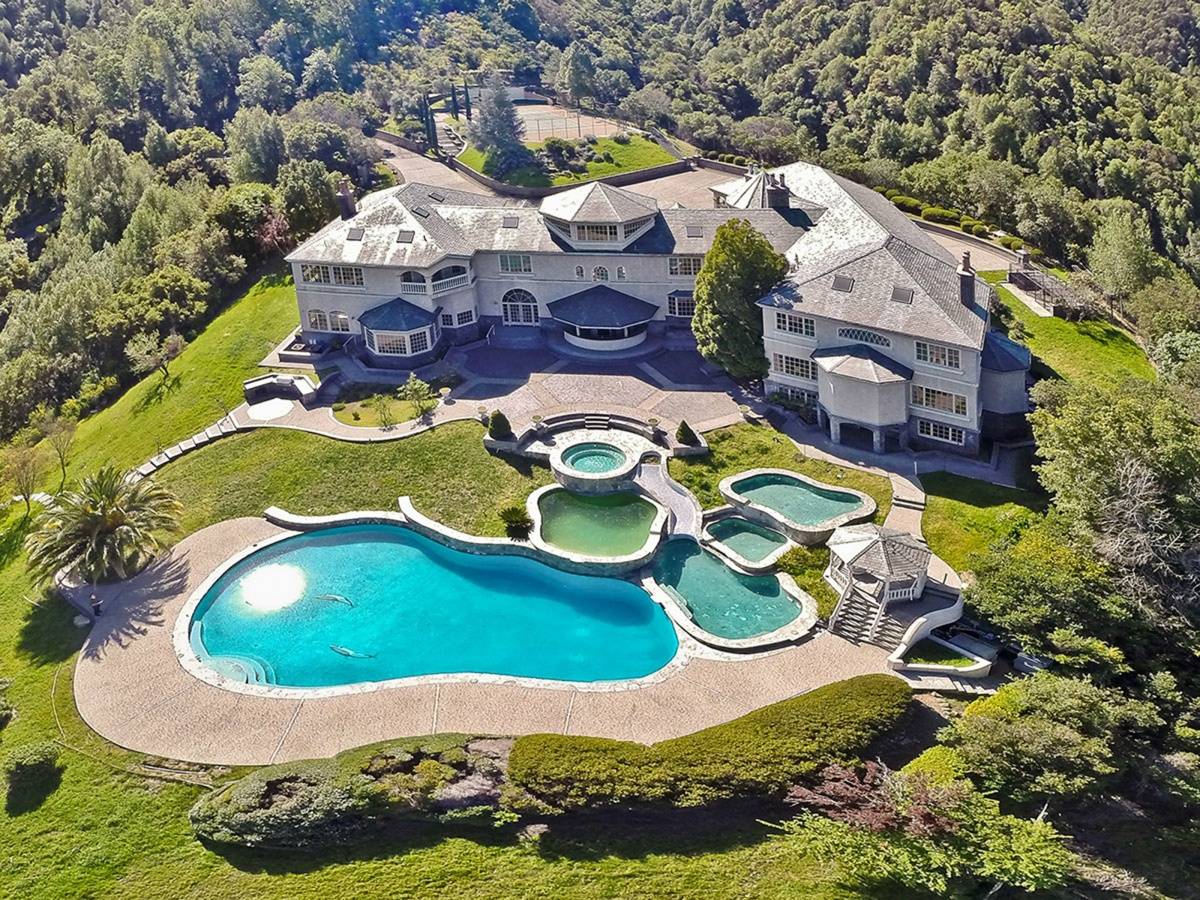
Before taking aerial property photos, you need to choose a focal point. This is the highlight of the real estate that you will focus on during shooting. You can draw viewers’ attention to a nice backyard swimming pool or a beautiful terrace that is bound to stand out from the rest. It doesn’t mean that there are unimportant elements of the property.
The main idea here is to incorporate the whole house in the frame but accentuate its most interesting feature. You can easily grasp what element to focus on experimenting with popular photography composition techniques.
For example, you can use leading lines or increase lighting in a specific area. Consider what methods work in your case and don’t be afraid to try something new. If you need to capture the interior of the real-estate property in addition to taking aerial photos, you may outsource this task to professional Dubai-based photographers who specialize in contemporary interior photography and know how to take top-level shots to improve your listings.

Doing drone photography for real estate, you should be very accurate with the settings. Primarily, you need to adjust shutter speed, aperture, ISO, and exposure. Actually, you need to configure these parameters based on your current shooting conditions.
A good rule of thumb is to start with ISO set to 100, shutter speed – 1/60th, and an f-stop of f/4.0. To avoid a blurry effect, keep shutter speed rather high. If it is possible, set the aspect ratio to 3:2 to take images at max resolution.
In case your device doesn’t allow it, settle for 4:3. It is also a great idea to active an AF. A manual focus isn’t suitable for this type of shooting unless you’re OK with too soft images.

If you want to earn money practicing real estate aerial photography, it is advisable to take images in RAW format. Some drones save RAW files with a .dng extension, so keep this in mind. RAW files are more suitable for advanced photo processing as the amount of info you get in this case is significantly larger than with other formats.
Thus, you can work more meticulously with shadows and highlights, and improve even those pictures that were taken in scarce lighting. If you frequently work in high-contrast settings, it is better to switch to HDR real estate photography.

Though you are concentrated on taking aerial property photos, which implies shooting with a drone from high above, you shouldn’t forget about other angles. Actually, viewers want to have as many images of a house from various sides as possible, so make sure you’ve taken wide-angle and top-down shots. Sometimes, it makes sense to show beautiful flowerbeds or a convenient wooden summer house to present a real estate in the best light.
Professional photographers like to take aerial photos at just several feet above eye level, which allows perceiving a house in an offbeat manner. Besides, you can take a drone at the height of 20ft to strike a balance between scope and level of detail.
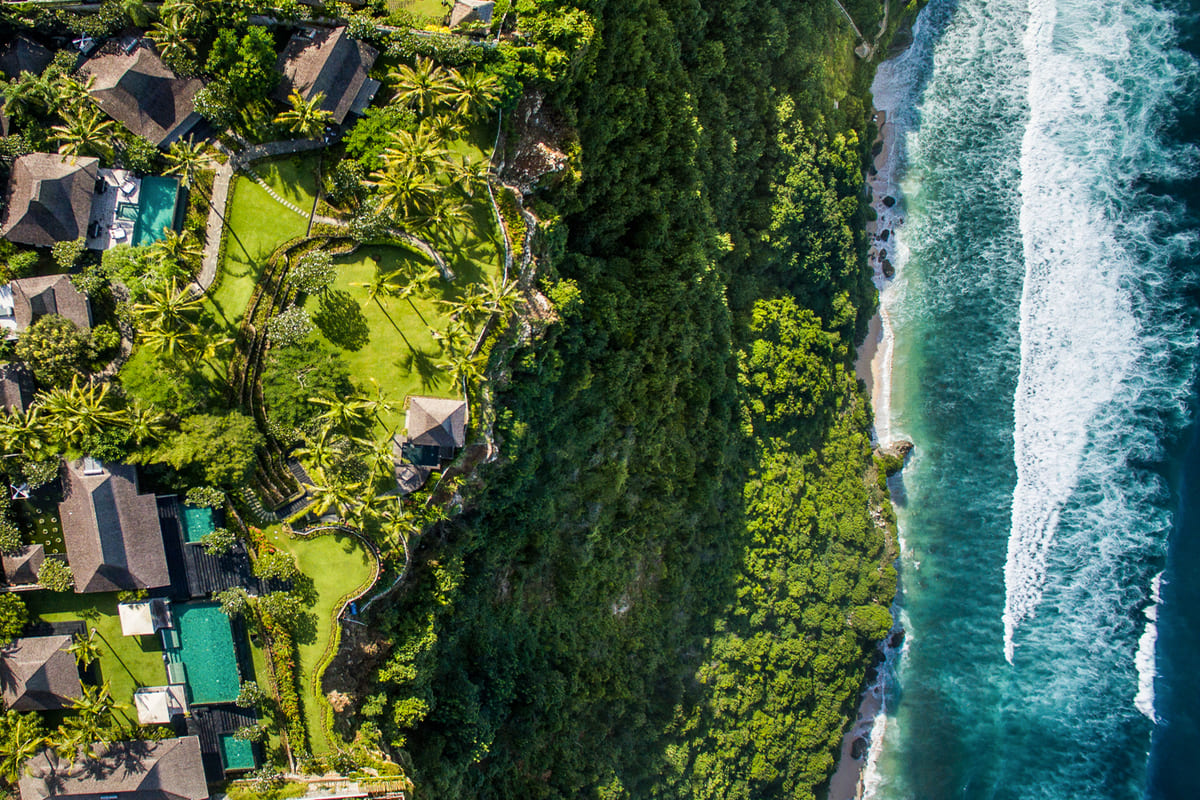
The most important object in drone real estate photography is a building, but if you remove all other elements surrounding it from the frame, the final photo will look uninteresting and plain. That’s why you need to mull over the composition and decide which objects around the property are worth capturing as well.
This can be a park, a lake, a forest, neighboring buildings, etc. Your main task is to help potential buyers understand what they will get buying this house and what facilities are within easy reach.
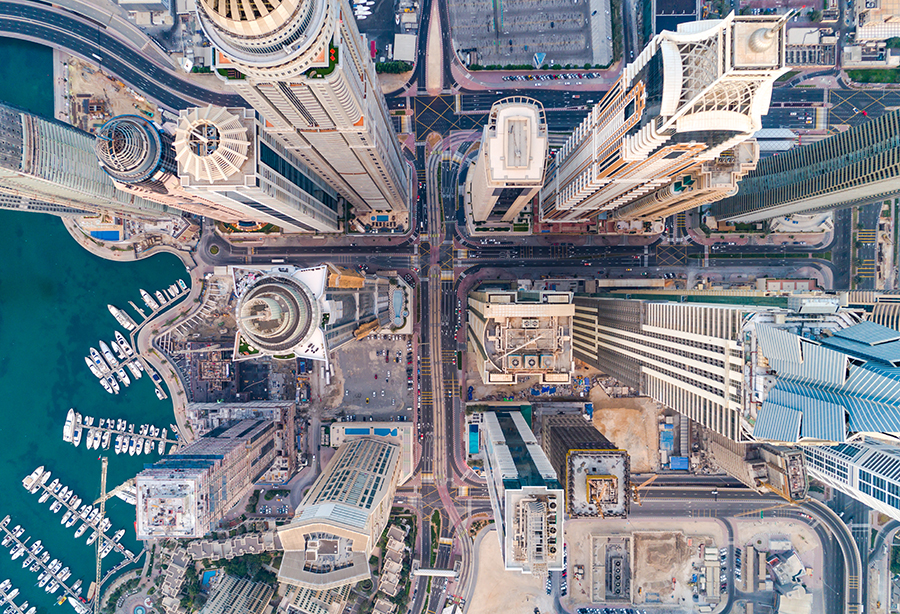
These are specific places, for instance not far from the airports, where you will not have legal right to use drones no matter what. Additionally, laws that regulate real estate drone services for commercial and hobby purposes are also different.
Don’t forget to find where special no-fly zones are beforehand. It’s only your direct responsibility and duty to be aware where they are situated, so you avoid working there and breaking the official law.

Do you want to edit your aerial home photos in a quick and effortless way? Download these presets and enjoy trouble-free image post-processing. These tools are designed for users, who plan to batch edit in Lightroom and make their photos look professional.